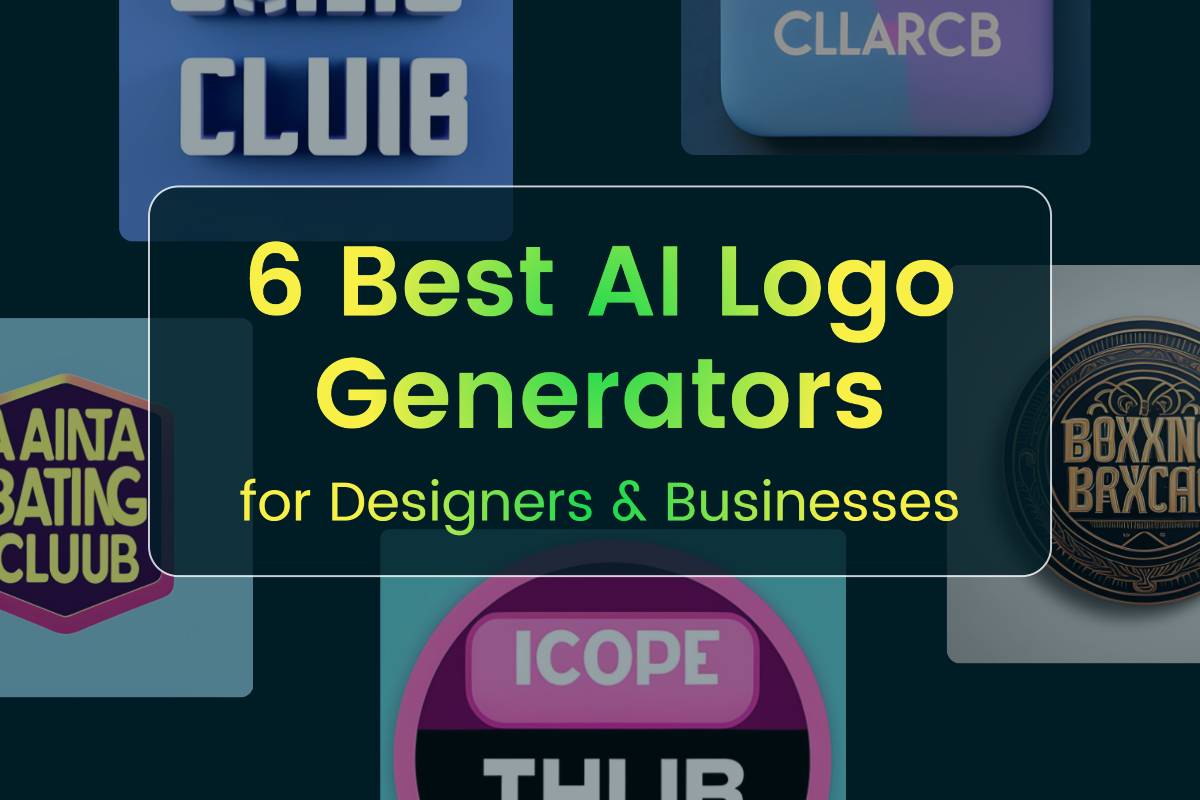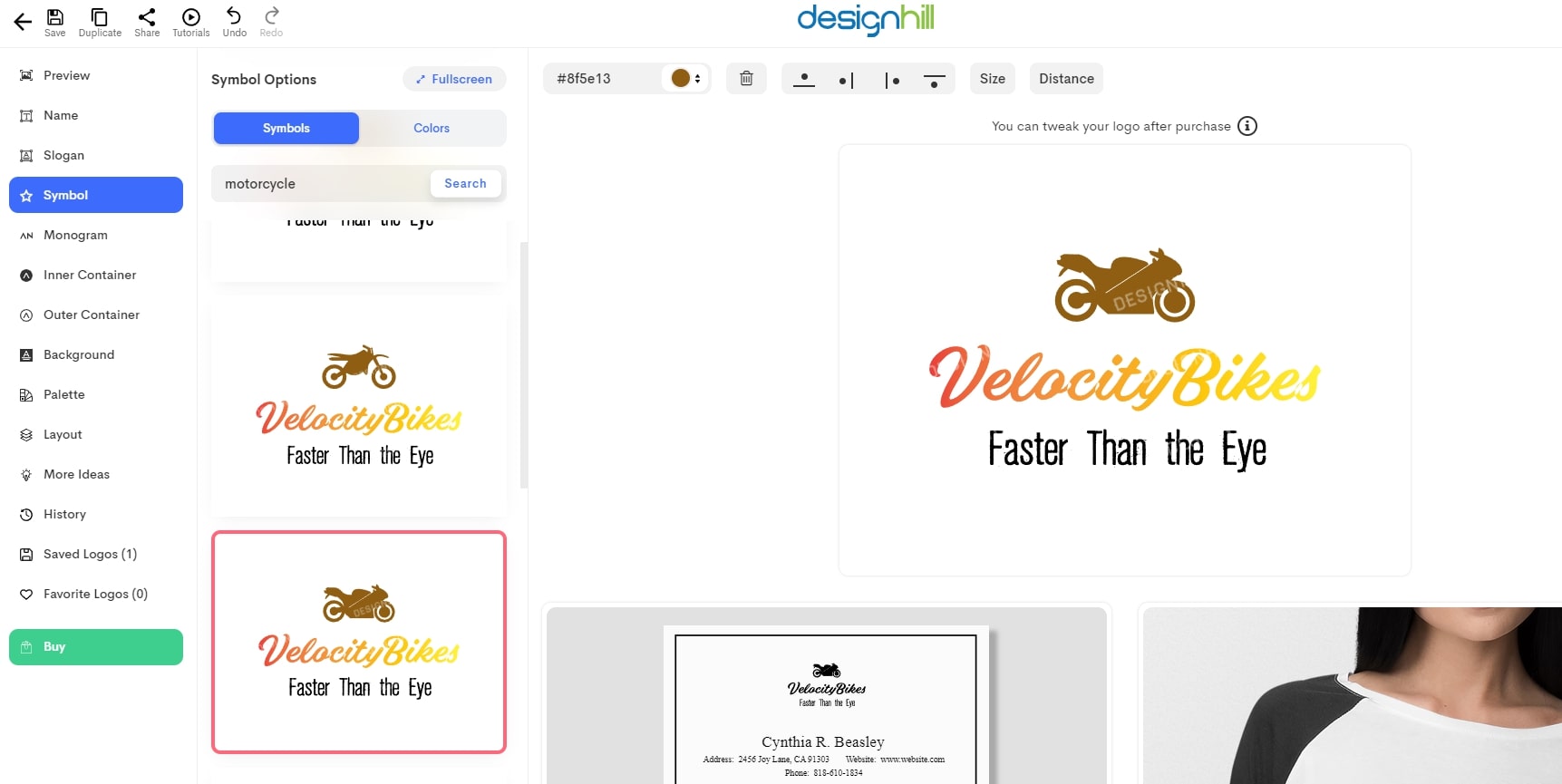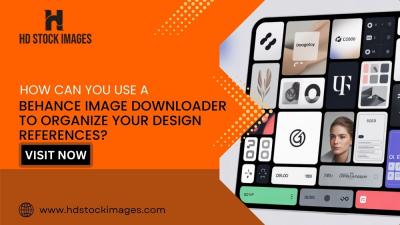The integration of
Artificial Intelligence (AI) in the creative industry has marked a significant shift in how art and design are approached, produced, and perceived. This technological evolution is not just transforming existing practices but is also paving the way for new forms of creativity. The following sections explore the multifaceted impact of AI in the creative domain.
- Enhanced Design Capabilities: AI has introduced tools that empower designers with enhanced capabilities. Complex tasks, such as pattern generation or color scheme optimization, are now more efficient, allowing for more time to be spent on creative ideation.
- Automated Content Creation: From generating written content to creating visual art, AI algorithms can automate repetitive or structured tasks, freeing artists and writers to focus on more innovative aspects of their work.
- Personalized User Experiences: In advertising and web design, AI enables the creation of personalized content that adapts to user preferences, leading to more engaging and effective user experiences.
- Data-Driven Creativity: Leveraging large datasets, AI can uncover trends and patterns that inform design decisions, resulting in outputs that resonate more effectively with the intended audience.
These advancements, however, come with their own set of challenges and considerations:
| Challenge | Consideration |
|---|
| Originality and Authenticity | Ensuring that AI-generated content maintains a level of originality and does not infringe on existing copyrights. |
| Human-AI Collaboration | Finding the right balance between AI assistance and human creativity to ensure that the artistic integrity is maintained. |
| Ethical and Moral Considerations | Addressing concerns related to the ethical use of AI in replicating or mimicking human-created art forms. |
The rise of AI in the creative industry is not just about the automation of tasks but also about the augmentation of human creativity. It is leading to a renaissance in artistic expression where technology and creativity merge to create unprecedented forms of art.
AI is not replacing human creativity but rather enhancing it, opening new possibilities that were previously unimaginable. As we continue to explore the capabilities and potential of AI in the creative industry, we stand on the cusp of a new era in art and design, one that is driven by a harmonious blend of technology and human ingenuity.
Understanding the Technology Behind AI Image Generators

At the heart of AI image generators lies a complex interplay of algorithms and computational processes that enable these tools to create visual content. Understanding this technology involves delving into the realms of machine learning, neural networks, and data processing. Let's break down the key components:
- Machine Learning and Neural Networks: AI image generators primarily rely on advanced machine learning techniques, particularly neural networks. These are computational models designed to mimic the human brain's structure and function, enabling the system to learn from large datasets and improve over time.
- Generative Adversarial Networks (GANs): A pivotal technology in AI image generation is Generative Adversarial Networks. GANs consist of two parts: a generator that creates images and a discriminator that evaluates them. The generator produces new images, while the discriminator assesses them against a training dataset, guiding the generator towards producing more realistic images.
- Deep Learning: This subset of machine learning involves training algorithms called deep neural networks on a large set of data. Deep learning enables the AI to identify and replicate complex patterns and features in imagery, essential for generating high-quality and diverse visuals.
Besides these technologies, the process of
AI image generation also involves several key steps:
| Step | Description |
|---|
| Data Collection and Processing | Gathering a vast and varied dataset is crucial. This data is then preprocessed for training the AI model. |
| Training the Model | The AI system is trained on the dataset, learning to recognize patterns, colors, textures, and styles. |
| Image Generation | Once trained, the model can generate new images based on the learned data, often using textual descriptions or other forms of input as a guide. |
| Refinement and Evaluation | The generated images are refined through further iterations, with the model continuously improving its output. |
Understanding the technology behind AI image generators reveals the intricate balance between computation and creativity. These systems do not just 'create' art; they
synthesize new visuals based on learned patterns and inputs, offering a fascinating blend of science and art. As the technology progresses, we can expect even more advanced capabilities, leading to more refined and creative visual outputs.
Exploring the Features of the Best AI Symbol Generators
The landscape of AI symbol generators is diverse, with each tool offering unique features and capabilities. When evaluating the best AI symbol generators, certain key features stand out, making them preferable for designers, artists, and creatives. Here is an exploration of these essential features:
- High-Quality Image Output: The ability to generate high-resolution, detailed images is crucial. The best AI symbol generators produce crisp, clear, and visually appealing symbols that can be used across various media.
- Diverse Style Adaptability: Flexibility in mimicking various artistic styles, from classical to contemporary, is a significant feature. This adaptability allows users to generate symbols that align with their specific project needs or creative visions.
- User-Friendly Interface: A straightforward and intuitive interface is vital for ensuring that the tool can be effectively used by professionals and amateurs alike.
- Customization and Control: While AI facilitates the design process, the ability for users to customize and control aspects of the symbol generation – such as color schemes, shapes, and textures – is highly desirable.
- Fast Processing Speed: Efficiency is key in a fast-paced creative environment. The best AI symbol generators deliver results quickly, without compromising on quality.
In addition to these features, the following table highlights some advanced functionalities that set apart top-tier AI symbol generators:
| Advanced Functionality | Description |
|---|
| Text-to-Image Conversion | Enables users to generate images and symbols based on textual descriptions, offering a high level of creative freedom. |
| Machine Learning Integration | Continuously improves output quality and diversity based on user feedback and interaction. |
| Scalability | Allows for the generation of symbols at various scales without loss of detail or quality, essential for different types of projects. |
| Compatibility and Integration | Seamlessly integrates with other design tools and platforms, enhancing workflow efficiency. |
In conclusion, the best AI symbol generators are characterized by their quality of output, stylistic versatility, user-friendliness, customization options, and efficient processing. These tools not only enhance creative possibilities but also streamline the design process, allowing for the creation of unique and compelling symbols tailored to specific project requirements. As AI technology continues to evolve, we can expect these features to become even more sophisticated, further revolutionizing the world of design.
How to Use AI Image Generators for Unique Design Creation
AI image generators are powerful tools that can significantly enhance the creative process. However, to effectively leverage their capabilities for unique design creation, it's essential to understand their functionalities and best practices. Here's a guide to using AI image generators for crafting one-of-a-kind designs:
- Choose the Right Tool: Start by selecting an AI image generator that aligns with your specific needs. Consider factors like output quality, style adaptability, and ease of use.
- Understand the Input Mechanisms: Familiarize yourself with how the AI tool receives input. Some generators use textual descriptions, while others might require a base image or specific parameters.
- Define Your Design Objectives: Clearly articulate what you aim to create. Having a solid understanding of your desired outcome will help you provide more precise inputs to the AI.
- Experiment with Styles and Elements: Utilize the AI’s ability to adapt to different styles. Experiment with various artistic elements like color palettes, textures, and compositions.
- Iterate and Refine: AI-generated designs often require refinement. Use the initial outputs as a starting point and iterate to achieve the desired result.
Alongside these steps, here are some additional tips to enhance your design creation process with AI:
| Tip | Description |
|---|
| Blend AI with Traditional Techniques | Combine AI-generated elements with traditional design methods for a unique blend of modern and classic aesthetics. |
| Stay Informed on Updates | AI tools continuously evolve. Stay updated with the latest features and improvements to fully exploit their potential. |
| Seek Inspiration | Explore how other designers are using AI in their work for inspiration and new ideas. |
| Use AI Responsibly | Be mindful of ethical considerations and copyright laws when using AI for design creation. |
Employing AI image generators for design creation opens up a realm of possibilities, allowing for the exploration of uncharted artistic territories. By understanding how to effectively use these tools, designers and artists can create unique, compelling designs that stand out in the digital landscape. As AI technology continues to advance, it's exciting to think about the future possibilities and innovations in the field of design.
Comparing Top AI Image Generators
In the rapidly evolving field of
AI image generation, several leading tools have emerged, each offering unique features and capabilities. To help users make informed decisions, a comparison of top AI image generators is essential. Here, we examine some of the most prominent tools in the market, focusing on their strengths, weaknesses, and best use cases.
| AI Generator | Strengths | Weaknesses | Best for |
|---|
| Generator A | High-resolution images, diverse style options | Requires higher processing power | Professional design and high-detail projects |
| Generator B | User-friendly interface, quick processing | Limited style adaptability | Amateurs and quick design tasks |
| Generator C | Advanced text-to-image features | Higher learning curve | Creative professionals and digital artists |
| Generator D | Integrated machine learning for continuous improvement | Can be cost-prohibitive for some users | Large-scale projects and teams |
When comparing these AI image generators, consider the following factors:
- Image Quality: Look at the resolution and detail of the images produced. High-quality outputs are crucial for professional-grade projects.
- Style Versatility: Evaluate how well the tool can adapt to different artistic styles and requirements.
- User Experience: Consider the ease of use, interface design, and learning curve associated with the tool.
- Processing Speed: Efficient processing times can significantly enhance workflow, especially for time-sensitive projects.
- Cost: Assess the cost-effectiveness based on your budget and the value it brings to your projects.
Each AI image generator has its own set of advantages and limitations. The choice depends on individual project requirements, user expertise, and desired outcomes. Whether you are a professional designer, an artist, or an enthusiast, understanding the capabilities and differences between these tools can help you select the most suitable one for your creative endeavors. As AI technology continues to advance, these tools will become even more sophisticated, offering a broader range of possibilities for digital imagery and design.
Real-World Applications and Success Stories
AI image generators have not only revolutionized the design industry but have also found applications in various fields, leading to numerous success stories. These tools have enabled professionals across different sectors to push creative boundaries and achieve remarkable results. Below are some key real-world applications and success stories of AI image generators:
- Marketing and Advertising: Companies have used AI-generated images to create unique advertising campaigns, resulting in increased engagement and customer interest. For instance, a renowned beverage brand utilized AI to design innovative product labels, each distinct and eye-catching, significantly boosting their marketing campaign.
- Film and Entertainment: In the film industry, AI image generators have been instrumental in creating realistic and intricate visual effects. A notable example is a science fiction movie where AI-generated imagery was used to create lifelike alien landscapes, garnering critical acclaim for its visual innovation.
- Fashion Design: Fashion designers have leveraged AI to generate novel patterns and designs. A luxury fashion house famously used an AI tool to create a groundbreaking collection that blended traditional motifs with futuristic designs, redefining fashion trends.
- Architecture and Interior Design: Architects and interior designers use AI to visualize and experiment with architectural designs and interior layouts. This was exemplified in a project where an architectural firm employed AI to generate multiple design variations for a sustainable living complex, leading to a highly acclaimed and innovative final design.
These success stories demonstrate the transformative impact of AI image generators:
| Industry | Application | Impact |
|---|
| Education | Creating engaging educational materials | Enhanced learning experience through visually rich content |
| Healthcare | Visualizing medical data and conditions | Improved understanding and diagnosis through detailed imagery |
| Automotive | Designing car models and prototypes | Streamlined design process with innovative concepts |
The versatility and adaptability of AI image generators have opened up new avenues for creativity and innovation. These tools have enabled professionals to not only enhance efficiency but also explore new possibilities in their respective fields. As AI continues to evolve, it's likely that its applications will expand, leading to more groundbreaking success stories in various industries.
Looking Ahead: The Future of AI in Image Generation
The realm of AI in image generation is rapidly evolving, promising a future replete with groundbreaking advancements and transformative possibilities. As we look ahead, several trends and developments are poised to shape the landscape of AI-driven image creation. This forward-looking perspective explores what the future might hold for this exciting field.
- Increased Realism and Detail: Future AI image generators are expected to produce images with unprecedented realism and detail, further blurring the lines between AI-generated images and real-life photography.
- Greater Customization and Control: Advancements in AI will likely offer users more control over the creative process, allowing for highly customized and precise image outputs based on nuanced inputs.
- Enhanced Accessibility: As technology becomes more user-friendly and cost-effective, AI image generation tools will become more accessible to a wider range of users, from professional designers to hobbyists.
- Integration with Other Technologies: We may see AI image generators being integrated with technologies like virtual reality (VR) and augmented reality (AR), leading to innovative applications in gaming, simulation, and interactive media.
- Ethical and Responsible Use: With the growth of AI in image generation, there will be an increased focus on ethical considerations, such as ensuring authenticity, preventing misuse, and respecting copyright laws.
Future scenarios that could emerge from these developments:
| Scenario | Potential Impact |
|---|
| Hyper-realistic Game Environments | AI could create game worlds that are indistinguishable from reality, providing gamers with an immersive and lifelike experience. |
| AI in Film Production | The film industry might leverage AI to generate realistic characters and settings, reducing costs and time in movie production. |
| Personalized Content Creation | AI image generators could tailor content to individual preferences, revolutionizing marketing and personalized media. |
As we venture into the future, the potential of AI in image generation is vast and full of opportunities. While embracing these advancements, it's crucial to navigate the ethical implications and ensure that AI is used responsibly and creatively. The coming years will undoubtedly reveal more about the capabilities of AI in transforming the visual arts and beyond, ushering in a new era of digital creativity.
Frequently Asked Questions (FAQs)
As AI image generation gains popularity, several questions arise regarding its capabilities, usage, and impact. Here are some frequently asked questions to provide further insights into this innovative technology:
- What is AI Image Generation?
AI image generation involves using artificial intelligence algorithms to create visual content. It ranges from simple graphic designs to complex, photorealistic images based on textual or visual inputs.
- How does AI Image Generation work?
This technology typically uses machine learning models like Generative Adversarial Networks (GANs) that learn from vast datasets of images and generate new images by understanding patterns, styles, and structures.
- Is AI-generated imagery royalty-free and safe to use?
The copyright status of AI-generated images can vary. It's important to check the terms of service of the AI tool used and understand any legal implications before using the images, especially for commercial purposes.
- Can AI Image Generators replace human artists?
While AI generators are powerful tools, they are not likely to replace human creativity and insight. Instead, they serve as tools that can enhance and complement the work of human artists.
- Are there ethical concerns with AI Image Generation?
Yes, there are ethical concerns, such as the potential for creating misleading or harmful content, and issues around intellectual property rights. Responsible use and clear guidelines are essential.
- How can one get started with using an AI Image Generator?
Getting started usually involves selecting an AI image generator tool, understanding its features and limitations, and experimenting with different inputs to create images.
- What are the costs involved in using AI Image Generators?
Costs can vary from free, open-source tools to premium services. The choice depends on the quality, features, and scale of the project.
- How is AI Image Generation likely to evolve in the future?
The future of AI image generation is expected to see improvements in realism, customization, accessibility, and ethical governance, along with integration with other emerging technologies.
Conclusion
In conclusion, the emergence and evolution of AI in image generation mark a significant milestone in the creative industry. From graphic designers to marketers, filmmakers to hobbyists, the ability to generate unique, high-quality images through AI has opened up a world of possibilities. As we've explored, these tools offer a range of features, from creating photorealistic images to customizing intricate designs, making them invaluable assets in various professional and personal projects.However, with great power comes great responsibility. As users and creators, it's crucial to remain aware of the ethical considerations and the importance of using these tools wisely and responsibly. Whether it's respecting copyright laws, ensuring authenticity, or understanding the implications of AI in the creative process, these considerations are vital for the sustainable growth of this technology.Looking ahead, the future of AI in image generation is bright and promising, with advancements likely to bring even more sophisticated capabilities. As we continue to navigate this evolving landscape, it's exciting to think about the endless creative possibilities that AI image generation holds. It's not just a tool for today but a window into a future full of innovation and endless creative potential.
 At the heart of AI image generators lies a complex interplay of algorithms and computational processes that enable these tools to create visual content. Understanding this technology involves delving into the realms of machine learning, neural networks, and data processing. Let's break down the key components:
At the heart of AI image generators lies a complex interplay of algorithms and computational processes that enable these tools to create visual content. Understanding this technology involves delving into the realms of machine learning, neural networks, and data processing. Let's break down the key components:
 admin
admin








